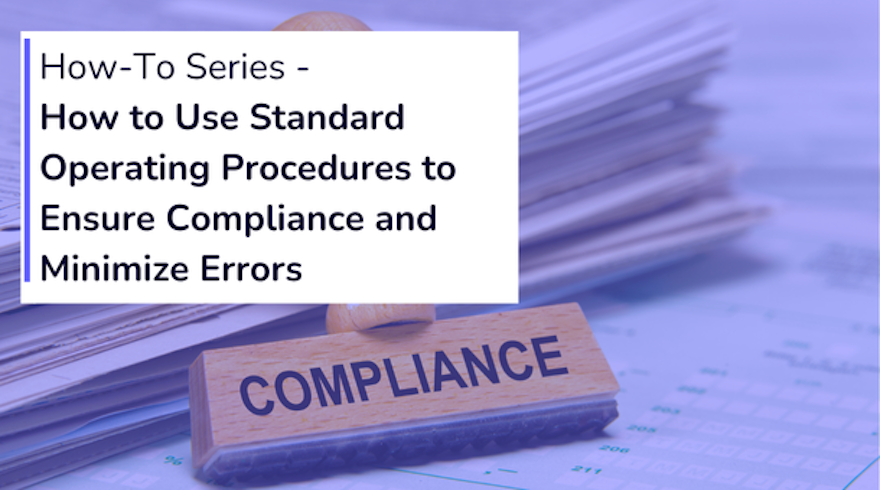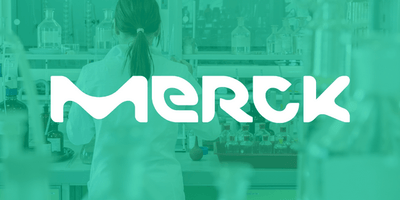Understanding Standard Operating Procedures: The Foundation of Organizational Excellence
In today's fast-paced business environment, organizations face increasing pressure to maintain high standards while minimizing costly errors. Standard Operating Procedures (SOPs) serve as the backbone of operational excellence, providing a systematic approach to ensure compliance and reduce mistakes across all business functions.
A sop standard operating procedure is a documented set of step-by-step instructions that outline how to perform routine tasks consistently and efficiently. These procedures serve as a roadmap for employees, ensuring that critical processes are executed uniformly regardless of who performs them.
What Are Standard Operating Procedures?
Before diving into implementation strategies, it's essential to understand sop what they actually represent. Standard operating procedures are detailed, written instructions designed to achieve uniformity in the performance of specific functions. They document the activities necessary to complete tasks in accordance with industry regulations, provincial laws, or organizational standards.
The primary purpose of sops is to:
- Ensure consistent execution of processes
- Maintain quality standards across operations
- Facilitate training and onboarding of new employees
- Reduce variability and human error
- Support regulatory compliance requirements
- Preserve organizational knowledge
The Critical Role of SOPs in Compliance Management
Regulatory compliance is non-negotiable in most industries, and standard work procedures play a pivotal role in meeting these requirements. Organizations that fail to maintain proper compliance face significant risks, including financial penalties, legal action, and reputational damage.
Regulatory Framework Integration
A well-designed sop procedure incorporates relevant regulatory requirements directly into operational workflows. This integration ensures that compliance becomes a natural part of daily operations rather than an additional burden. When employees follow established standard operating process guidelines, they automatically adhere to regulatory standards.
Key compliance benefits include:
- Systematic documentation of regulatory adherence
- Traceable audit trails for inspection purposes
- Consistent application of regulatory requirements
- Reduced risk of compliance violations
- Streamlined reporting and documentation processes
Documentation and Audit Readiness
Effective standard of procedure documentation creates a comprehensive record of how operations are conducted. This documentation is invaluable during regulatory audits, internal reviews, and quality assessments. A robust sop system operating procedure framework ensures that all activities are properly recorded and easily accessible for review.
Minimizing Errors Through Systematic Approach
Human error is inevitable in any organization, but well-designed operation sop frameworks can significantly reduce the frequency and impact of mistakes. By standardizing processes and providing clear guidance, SOPs create a safety net that catches potential errors before they become costly problems.
Error Prevention Strategies
The most effective sop operating procedure systems incorporate multiple layers of error prevention:
- Clear Step-by-Step Instructions: Detailed procedures eliminate ambiguity and reduce the likelihood of misinterpretation
- Checkpoint Integration: Built-in verification points allow for error detection and correction during process execution
- Standardized Terminology: Consistent language across all procedures reduces confusion and miscommunication
- Visual Aids: Diagrams, flowcharts, and illustrations support text-based instructions
- Exception Handling: Predetermined responses to common variations or problems
Quality Control Mechanisms
A comprehensive sop standard of procedure system includes built-in quality control measures that continuously monitor and improve process performance. These mechanisms help identify potential issues before they escalate into significant problems.
Developing Effective Standard Operating Procedures
Creating robust sop standard operating procedures requires careful planning, stakeholder involvement, and attention to detail. The development process should be systematic and thorough to ensure that the resulting procedures are practical, comprehensive, and user-friendly.
Planning and Preparation Phase
Before writing standard operating procedures, organizations must conduct thorough planning to identify which processes require documentation and prioritize development efforts. This phase involves:
- Process mapping and analysis
- Stakeholder identification and engagement
- Resource allocation and timeline development
- Regulatory requirement assessment
- Risk analysis and mitigation planning
Content Development Guidelines
When creating an sop, writers must balance comprehensiveness with usability. The most effective standard op procedures are detailed enough to ensure consistency while remaining accessible to users with varying levels of experience.
Essential Elements of SOP Content
Every standard operating guidelines document should include:
- Purpose Statement: Clear explanation of why the procedure exists and what it accomplishes
- Scope Definition: Specific boundaries and applications of the procedure
- Responsibility Matrix: Clear assignment of roles and accountabilities
- Detailed Instructions: Step-by-step guidance for task execution
- Safety Considerations: Relevant safety protocols and precautions
- Quality Standards: Expected outcomes and performance criteria
- Documentation Requirements: Record-keeping and reporting obligations
Implementation Strategies for Maximum Impact
Developing excellent standard operating protocol documents is only the first step. Successful implementation requires careful change management, comprehensive training, and ongoing support to ensure that procedures are consistently followed.
Change Management Approach
Introducing new standard operating procedure examples can meet resistance from employees who are accustomed to existing workflows. Effective change management strategies help overcome this resistance and facilitate smooth adoption.
Key change management principles include:
- Clear communication of benefits and rationale
- Stakeholder involvement in development and testing
- Phased rollout to minimize disruption
- Ongoing support and feedback mechanisms
- Recognition and reinforcement of positive adoption
Training and Competency Development
Comprehensive training programs ensure that employees understand not only what to do but also why procedures exist and how they contribute to organizational success. Training should cover both technical aspects of procedure execution and the underlying principles of compliance and quality.
Leveraging Technology for SOP Management
Modern organizations increasingly rely on digital solutions to manage their sop document libraries and streamline procedure implementation. Technology offers significant advantages in terms of accessibility, version control, and performance monitoring.
Digital Documentation Platforms
Sop software solutions provide centralized platforms for storing, managing, and distributing procedure documentation. These systems offer features such as:
- Version control and change tracking
- Role-based access controls
- Automated workflow approvals
- Integration with existing business systems
- Mobile accessibility for field operations
- Analytics and reporting capabilities
Automated Compliance Monitoring
Advanced standard operating procedure software can automatically monitor compliance with established procedures and generate alerts when deviations occur. This capability enables proactive management of compliance risks and helps maintain consistent performance standards.
Best Practices for SOP Development and Maintenance
Creating effective standard operating procedure document libraries requires adherence to proven best practices that have been refined through years of organizational experience and industry research.
Writing Excellence Standards
Effective sop writing requires specific skills and approaches that differ from other forms of technical documentation. The most successful procedures are characterized by:
- Clear, Concise Language: Use simple, direct language that minimizes ambiguity
- Logical Flow: Organize information in a sequence that matches natural workflow
- Active Voice: Use active voice to create clear, actionable instructions
- Consistent Formatting: Apply uniform formatting standards across all procedures
- User-Centric Design: Structure content to meet the needs of actual users
Continuous Improvement Framework
The most effective standard of procedure example documents evolve continuously based on user feedback, performance data, and changing requirements. Organizations should establish formal review cycles and update procedures regularly to maintain relevance and effectiveness.
Review and Update Processes
Regular review processes ensure that procedures remain current and effective:
- Scheduled periodic reviews based on risk and criticality
- Triggered reviews following incidents or changes
- User feedback collection and analysis
- Performance metric evaluation
- Regulatory update assessment
Measuring Success and ROI
Organizations must establish metrics to evaluate the effectiveness of their sop form example implementations and demonstrate return on investment. These measurements help justify continued investment in SOP development and identify areas for improvement.
Key Performance Indicators
Effective measurement requires tracking both leading and lagging indicators:
- Compliance Rates: Percentage of procedures followed correctly
- Error Reduction: Decrease in mistakes and rework
- Training Efficiency: Time required to achieve competency
- Audit Results: Performance in regulatory and internal audits
- Employee Satisfaction: User feedback on procedure effectiveness
- Cost Savings: Reduction in operational costs and waste
Continuous Monitoring and Improvement
Successful organizations when they make sop implementations establish ongoing monitoring systems that track performance and identify improvement opportunities. This approach ensures that procedures continue to deliver value over time and adapt to changing business needs.
Conclusion: Building a Culture of Excellence
Implementing effective standard operating procedures is more than just documenting processes—it's about creating a culture of excellence that prioritizes consistency, compliance, and continuous improvement. Organizations that successfully leverage SOPs to ensure compliance and minimize errors position themselves for sustained success in competitive markets.
The journey toward operational excellence through sop implementation requires commitment, resources, and patience. However, the benefits—including reduced errors, improved compliance, enhanced efficiency, and better employee satisfaction—make this investment worthwhile for organizations serious about achieving their potential.
By following the strategies and best practices outlined in this guide, organizations can develop and implement SOP systems that not only meet current needs but also provide a foundation for future growth and success. The key is to approach SOP development as a strategic initiative that supports broader organizational objectives rather than merely a compliance requirement.





